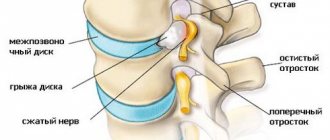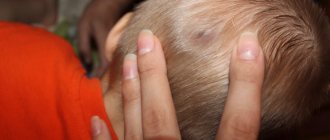Down syndrome is a set of pathologies that affect the fetus during fetal life and are the result of a congenital chromosomal defect. Already in the first days of life, Down syndrome manifests itself with striking facial features. The eyes are almond-shaped, slightly smaller and slanted. The root of the nose is also small and gives the nose a curved shape. The most obvious feature of this disorder is also mental retardation.
For this hereditary disease the name "Mongolism" is often used, due to the characteristic appearance of children affected with small, almond-shaped eyes, zešikmenýma to the nose. They look like this, people of the Mongoloid eastern races. The term Down syndrome summarizes a variety of abnormalities that affect the fetus. Perhaps the most serious feature of this disorder is that all children with Down syndrome have varying degrees of mental impairment.
We invite you to read the article: ➟ Symptoms of dyslexia, What are the Causes of the disease and how to treat
Manifestations of the syndrome
Developmental disorders may not always appear immediately after birth, but a very striking and typical feature of these children is their significant compliance at an early age. Their limbs look like they don't even have bones. Already in the first days of life they become noticeable facial features. The eyes are almond-shaped, slightly smaller and slanted. The root of the nose is also small and gives the nose a curved shape. As a result, disabled children often puff. The mouth is also smaller, but the tongue is of normal size and therefore protrudes from the mouth. As the child grows, abnormalities in the arms and legs begin to appear. The arms are short and wide, with short, strong fingers bending towards the thumb. The gap between the toes and the rest of the toes is unusually wide, and the foot resembles a square shape. Internal malformations that require surgical intervention are also present. About 25% of children with Down syndrome also have a congenital heart defect. Hernias are also common, and intestinal disturbances sometimes lead to severe constipation. Despite all these problems, the most obvious feature of this disorder is mental retardation. Typically, the IQ of these children ranges from 30 to 70, but sometimes it can reach 70 (the average IQ of unaffected people is 100). However, with special care and education, IQ can increase to 20 points. Regardless of all these problems, children with Down syndrome are usually carefree, happy and friendly, and like other people, grateful for care.
Severity of abortion
Medical companies, in pursuit of profits, act as real predators, providing false information about the harmlessness and even usefulness of abortion. But for some reason they have no information that mothers who kept the child no matter what, said no to abortion, eventually became happy, self-sufficient people, and those who had an abortion (the murder of a small innocent person) suffer from pangs of conscience all my life without hope of complete consolation. After all, God will forgive, but the child will not be returned.
Do not make mistakes, in this case they cannot be completely corrected! And if you did, you need to go to the bishop so that he can help in atonement for the sin. A simple confession is often not enough, because few people know that in Christianity, abortion is an incomparably greater sin than the murder of an adult, even an innocent person, and a bishop, not an ordinary priest, has the right to deal with these issues. And how this infanticide has become devalued in society, because it is often briefly called “purge.”
Remember, while you are alive, with repentance, redemption from any sin is possible, do not lose hope! You need to say no to abortion, and you also need to say no to a doctor who inclines towards infanticide.
Causes
Down syndrome is caused by a defect in chromosomes, particles that pass on hereditary traits from parents to children. This syndrome occurs in approximately 1 in 660 live births and is the most common type of mental retardation. Typically, a person has 46 chromosomes, which are grouped into 23 pairs. We number them from largest (chromosome #1) to smallest (chromosome #23). When sex cells divide, pairs separate - the sex cells do not contain the entire set of 46 chromosomes, but only 23 - half. When the sperm and egg are combined, the result is a full set of 46 chromosomes in 23 pairs, half coming from the father and half from the mother. In Down syndrome the chromosomes are 47 instead of 46. The same chromosome is always affected - 21. We know of a total of three different types of its disorder, but in 92% of affected children it is only one, trisomy - 21 chromosomes - three instead of the usual two. Doctors do not yet know exactly how this defect occurs, but according to modern theories, it occurs during the division of sperm or eggs, that is, before fertilization or at an earlier stage. No medical research has yet been identified.
Relationship between dementia and other diseases
Dementia often develops against the background of a pathology such as Pick's disease, which affects the frontal cells of the brain.
It is the second leading cause of dementia worldwide. The third most common form of dementia is Parkinson's disease.
Lobar sclerosis
Pick's disease, or lobar sclerosis, is a rare disease, mainly found in women over 60 years of age, and manifests itself in the form of damage to the frontotemporal lobe of the cerebral cortex.
The cause may be heredity, head injuries, brain tumors, alcoholism (drug addiction), or lack of B vitamins.
At an early stage, the patient clearly manifests antisocial behavior, significant personality changes, and disinhibition. This serves as a signal of the gradual development of dementia.
How are depression and dementia related? When the left hemisphere is affected, the symptoms are observed against the background of deep depression, and the pathology of the right hemisphere is accompanied by euphoria. Damage to the frontal lobe is fraught with emotional and mental instability and apathy.
The second step in the development of the disease has the following symptoms:
- short-term or permanent memory loss,
- deterioration of vision and hearing,
- speech disorder,
- loss of the ability to think and act logically.
At the last stage, a person is absolutely incapable of self-care and is not responsible for his actions. During this period, a severe form of dementia that cannot be treated is diagnosed. The patient's life expectancy is no more than 10 years.
Idiopathic parkinsonism syndrome
Against the background of this disease (especially in severe form), dementia also develops. Parkinson's syndrome (or idiopathic parkinsonism syndrome) is a pathology caused by the death of neurons, which disrupts intercellular connections. It is characterized by characteristic trembling of the hands, changes in gait, and strong muscle tension.
In this case, thinking is not impaired; only memory and speech suffer.
Dementia develops in 20-25% of cases, very slowly, and only at the last stage. At first, mild emotional disorders and depression are observed. Later, problems with speech begin.
Mental retardation
This is the name for congenital dementia, which manifests itself both in children under 3 years of age and in utero.
No deterioration or progression of the pathology is observed.
A person with mental retardation stops developing intellectually; he initially lacks independence and the ability to learn. All this is accompanied by a lack of mental and physical development.
Huntington
A fairly rare hereditary disease that affects young people aged 25-45 years. It has a long development process, during which mental abnormalities and involuntary muscle twitching are noted.
Caused by a disorder of intracellular protein metabolism, in which the central nervous system malfunctions. As a result, total atrophy of some lobes of the brain occurs.
At the last stage of the disease, there is a complete loss of personality.
Hyperparateriosis
This is the name for endocrine pathology caused by increased production of parathyroid hormone.
It is not easy to recognize the appearance of hyperparateriosis, and this can only be done with a clinical examination of blood serum. The test will show high levels of calcium in the blood and low levels of phosphate.
Not only the nervous system suffers, but also the cardiovascular system, kidneys, and bone tissue.
Down
Does a person with Down syndrome have congenital dementia?
Down syndrome is a congenital genetic syndrome that causes incurable mental retardation.
Often accompanied by leukemia, heart disease, obesity, hearing and vision loss, low immunity, and short life expectancy.
Children born with this disease experience developmental delays and learning difficulties from the first years of life. Dementia can appear in adulthood and be accompanied by epileptic seizures.
Find out more about dementia:
- what are the causes of dementia in children and adolescents,
- how does pathology manifest itself in old age, is there a difference in symptoms in women and men,
- how to identify dementia, what tests can be taken, how to treat the disease in older people,
- what is the life expectancy of a sick person, is it possible to issue him a disability,
- what should the relatives of the dementor do, how to communicate with him, how to provide him with competent care.
Occurrence of the syndrome
The disease is closely associated with maternal age, but some evidence also suggests some minimal association with paternal age. The probability of a defect in a 20-year-old mother is 1:2300. With age, the probability of a defect increases to 1:290 at 30 years and to 1:46 at 45 years. If a woman has already had a child with Down syndrome, the likelihood of having another affected child doubles. If a woman with Down syndrome (quite rarely) becomes pregnant, the chance of the offspring being affected is 1:2. Men with Down syndrome cannot have children because their testicles are underdeveloped and do not function. The reason older women are more likely to have this baby than younger women may have to do with the age of the eggs. From the age of first menstruation, all eggs are ready and ready to be released into the ovaries. They are then released gradually at the rate of one egg per month. Thus, the eggs age along with the woman, and of course, the older woman also has eggs. In men it is completely different; sperm is produced continuously throughout life. The longer an egg lives, the more likely it is to become genetically damaged by events such as viral infections. But scientists aren't entirely sure because studying a woman's eggs in the ovary is extremely difficult. Perhaps over time a new theory will arise around this problem.
Harm of prenatal diagnosis
Mom can know what diseases the baby is sick with while still in the tummy. After all, there is a practice when a child needs to have an operation when he is not yet born. But prenatal diagnosis in most cases causes irreparable harm to both the child and the mother.
But it must be borne in mind that ultrasound and other diagnostic methods often give erroneous results, which may indicate non-existent diseases and push the mother to terminate the pregnancy. There have been cases of misdiagnosis that were not confirmed by alternative diagnostics. The test for Down syndrome is especially harmful. After all, if a mother finds out that the child is sick, this has an extremely negative impact on the course of the pregnancy, not to mention the fact that abortions are often performed in the world with such a diagnosis.
An abortion has irreversible consequences not only for the woman and the child, but also for all relatives and friends who will suffer throughout their lives from changes in the mother’s psyche. But at the same time, if a mother carries and gives birth to even a sick child, her care and sacrifice makes the family and the world around us better, more joyful and kinder. After all, motherhood and fatherhood are the best things on Earth, and good parents will not sacrifice the life of a child because of their imaginary comfort.
Moreover, even a child with Down syndrome can develop quite normally, feel comfortable in society and even be independent. The main thing is to help him with this not just from birth, but even during pregnancy, showing your love, care and willingness to fight for his well-being. Give kindness to your neighbor and the world will become a better place, first of all, for you. Happiness is not about receiving something, but about giving joy to someone; to be happier, you need to give joy to those who need it. Try it - you will be pleasantly surprised. No matter how difficult it is for a person, there will always be someone who finds it even more difficult.
The statistics on the attitude of mothers towards a sick child are simply terrible - 9 out of 10 women, as a result of prenatal diagnosis and detection of the syndrome, have an abortion, more than 90% of women who give birth to a child are abandoned in maternity hospitals, only one child out of 20 has a chance of love and care in family, but it is often not accepted in society.
Regarding prenatal diagnosis, it often gives false results, and a child who was diagnosed with Down syndrome in utero is often in fact completely healthy. This also applies to the use of invasive diagnostic tools, which are often erroneous. The danger is that such a diagnosis pushes mothers to have abortions, and if the murder does not take place, it worsens the emotional state of the mother, and therefore the health of the child is at risk.
Let's not forget that the syndrome is not a death sentence; children with the disease are often more gifted, developed and successful than healthy ones, no matter how paradoxical it may sound. Let's say no to abortion, but yes to care and love.
Is the syndrome inherited? No, but patients themselves should abstain from sexual activity, as they are at risk of having children with disabilities.
Amniocentesis and other examinations
Amniocentesis Amniocentesis is now routinely performed in pregnant women over 34 years of age, and women over 30 years of age can undergo this test if they wish. It's simple, quick and painless. A small amount of amniotic fluid is required, in which fetal cells float. They are then examined under a microscope to determine the number and shape of their chromosomes. If a chromosome defect is detected, the woman is advised to terminate the pregnancy. Then the decision is made for her and her partner. Instead of amniocentesis, placental particles are collected in some facilities during the third month of pregnancy. The gynecologist removes a small piece of the placenta using a probe inserted through the vagina into the uterus. This placental tissue contains exactly the same chromosomes as the fetus itself, so its cells can be examined in the same way as cells obtained by amniocentesis. This method can be used to obtain information about the fetus earlier and to make a timely decision to proceed or terminate the pregnancy. Blood tests may also be performed in the early stages of pregnancy to determine to what extent a couple is at risk of having a child with a disability. Based on the results of these studies, amniocentesis can be recommended.
Treatment options
Although it is impossible to cure Down syndrome, with the help of various therapies and a special approach to education, it is possible to teach a child self-care: he can learn to eat, dress, perform hygiene procedures, and get dressed on his own. You can also teach him to communicate to a certain extent with others.
Here are the methods involved in the treatment and rehabilitation of children with Down syndrome:
- Massage . The muscles of newborns and infants with this disease are often underdeveloped, which is why they begin to hold their heads, sit and walk much later than other children. Massage in combination with gymnastics will help to quickly restore muscle tone.
- Visiting a nutritionist . Often people with Down syndrome have problems with excess weight. Obesity can cause very unpleasant symptoms that indicate disorders, including in the cardiovascular system, so it is important to monitor the child’s diet. It is especially important to adhere to such dietary standards for those who have problems with the heart or digestive tract.
- Speech therapist consultations . As already mentioned, the syndrome is often accompanied by disturbances in speech development. A speech therapist will help the child express his thoughts more clearly and articulately. The pronunciation of words will improve and your vocabulary will be enriched.
- Water procedures , treatment with hydromassage. Often water gymnastics, and even just swimming, develops a child’s motor skills, makes him more dexterous, and strengthens his muscles. Recently, dolphin therapy has become increasingly popular: during it, the baby swims next to dolphins and communicates with them. There are currently no statistics describing such treatment, but communication with animals and swimming will be beneficial in any case.
- Classes with teachers according to special programs . The fact that children with Down syndrome develop more slowly than their peers does not mean that they are not learning at all. Basic skills, knowledge and abilities can be taught to them; the only question here is the qualifications of the teacher.
It is important to note that most often it is not the manifestations of the syndrome itself that cause the most problems, but the diseases that accompany it. And these diseases can be quite serious: heart disease, visual and hearing impairment. Their treatment may require, among other things, surgical intervention.
What to do with Down syndrome
It is extremely important that parents are made aware of any fetal abnormalities as soon as possible so that they have time to take a clear stance on the issue and decide how to proceed. If they feel that it will be difficult for them to have a child with mental and physical disabilities, they can have an abortion. On the other hand, if they decide to continue with the pregnancy and feel that they need support and help, they can contact various agencies that help parents disabled children. These organizations can provide them with assistance and valuable advice on caring for, raising a disabled child, etc. They also provide psychological support to the parents themselves. Parents of disabled children often suffer from feelings of guilt that can last for months. Psychological counseling and support that parents in the same situation can provide to parents can help overcome these feelings and initial difficulties.
We invite you to read the article: ➟ Symptoms of Eclampsia and Preeclampsia: What are the Signs of the Disease. All about the disease
Treatment
Down's disease is incurable. Only medications that strengthen the body and stimulate the nervous system are used.
Parents raising such a child usually surround him with great love and attention. They must make the most of his limited mental and physical capabilities. Only, thanks to great care and golden patience, is it sometimes possible to raise a person who is not only capable of serving himself, but also has basic labor skills.
The average life expectancy of people with Down syndrome is less than the average life expectancy. They usually die very young, before the onset of puberty, and one of the most common causes of death is heart disease. It has also been noted that patients with Down syndrome more often than others suffer from leukemia, a disease of the hematopoietic system. However, many sick children raised in families grow up and live to approximately 50 years of age. This is a huge merit of rapidly developing cardiology.
Development of children with Down syndrome
In any case, children with Down syndrome grow up happy and happy people. If they are given enough attention and care, they can sometimes learn enough to manage their own lives. Those who find work become reliable, resilient workers who rarely miss work due to illness. An important factor in the further development of children with Down syndrome is that they are positively stimulated from an early age. It is imperative to show them love and affection from the very beginning. In addition, parents should also try to train their senses - moving their limbs, playing different sounds to train their ears, exposing the child to different environments to maintain and practice their visual attention. Inadequate care, children with Down syndrome do not show significant progress and their condition becomes quite deteriorating. Due to low IQ, few disabled children learn to read and write well. However, some experts believe that children with Down syndrome can achieve great success with the right teaching approach. Usually there are no problems with personal hygiene, clothing and food. Children with higher IQs can perform simpler tasks such as shopping from a list, etc. However, they may have difficulty counting money. Adolescence is difficult for both parents and children themselves. It is often possible to send your child on holiday away from home in the company of other similarly affected peers. Various children's organizations or associations of parents of disabled children organize summer camps for these children.
Down syndrome: causes
So, the matter is clear - the disease appears as a result of an extra chromosome. But this is only the main cause of Down syndrome. But where does this extra chromosome itself come from? Why do some people have forty-six of them, and others have one more?
From the school biology course we remember that meiosis is cell division when the number of chromosomes is reduced by exactly half. But sometimes during meiosis the chromosomes do not separate, which is why a gamete is formed with twenty-four chromosomes. We add to it a normal gamete (meaning, with a standard number of chromosomes) - and we get forty-seven chromosomes in total.
As mentioned above, there is a direct connection between the disease and the age of the mother. The older a woman is, the greater the likelihood of giving birth to a baby with developmental disabilities. For comparison: if the age of the expectant mother does not exceed twenty-four to twenty-five years, the chance that she will have a sick child is one in one and a half thousand. If a woman is over thirty but under forty, the risk of the baby developing the disease is one in two hundred. Well, if a young mother is over forty-five, the probability of developing Down syndrome is one chance in twenty. It is believed that the reason for this is the age of the woman's egg.
The age of the father also plays an important role in the causes of Down syndrome. The opportunity to give birth to a healthy baby is significantly reduced if the future father has crossed the threshold of forty-two years.
Also among the causes of Down syndrome during pregnancy is the accidental formation of the necessary germ cells, which in no way depends on the lifestyle and behavior of the future parents. Another reason is a malfunction in the mother’s egg. It is impossible to say why it happens, just as it is impossible to predict when it will happen and when it won’t.
The cause of Down syndrome is also a feature of male sperm. There is no one to blame for this - it happens. But when parents can be to blame, it is in the case of incest. Marriage between blood relatives is far from the least important cause of Down syndrome in children. Therefore, love is love, but when marrying some second cousin, a woman should be prepared for the fact that she herself has increased the risk of having a sick (or, as they say, special) baby in her family.
The causes of Down syndrome during pregnancy include, of course, the bad habits of parents. Smoking, alcohol abuse, and especially drugs: all this can directly affect the health of the unborn baby. You should think twice before having a child if breaking bad habits is difficult or impossible. After all, an innocent child should not suffer because of the carelessness of his parents.
Perhaps the last and most significant on the list of causes of Down syndrome is heredity. If someone in the family (not even necessarily the mother or father) has already struggled with this disease, there is a high chance of it happening again. In general, we need to emphasize: a sick child can be born even to the healthiest parents in the world, and the causes of Down syndrome in the fetus in this case will become a mystery to everyone, including doctors. It happens - that's all that science can still say.
Life expectancy
People with Down syndrome die earlier than others. They are at greater risk of pneumonia during childhood, and early death can also be caused by congenital heart disease. However, if a child does not have cardiac problems and survives the first years of life without problems, there is no reason not to live at least into middle age. It is very important to remember that children with Down syndrome, like any other child, vary enormously in their personal characteristics. Each of them should be treated in a way that suits their emotional and intellectual level, just like any other child.
Attention! The information posted on this page is provided for informational purposes only and does not constitute a guide for self-medication
We invite you to read the article: ➟ Treatment of phlebitis: Causes and Prevention. All about the disease ➟ Treatment of phobias: Causes and Prevention. All about the disease ➟ Symptoms of gastroenteritis, What are the Causes of the disease and how to treat ➟ Signs of hepatitis, What are the Causes of the disease and how to treat ➟ Symptoms of Head Injury, What are the Causes of the disease and how to treat
Child down - what does it mean? Signs and symptoms of Down syndrome
The genetic disorder that causes the child's developmental characteristics is called Down Syndrome and occurs due to an additional 47th chromosome. You can find out about the presence of this disease during pregnancy - there are many studies for this. If parents decide to have a child with a pathology, it should be understood that care for such children must be special. Only increased family attention will help partially solve the problem of lack of education and intellectual development.
Trisomy 21 or Down syndrome is a congenital genetic disease that occurs due to the process of chromosome divergence during the formation of eggs and sperm. This causes the receipt of a third chromosome 21 instead of the usual two in 95% of cases and its fragments in 5%. As a result of research by the World Health Organization, it was found that the probability of having a sick child is 1 in 600-800 babies.
The karyotype (set of chromosomes) in a healthy person consists of 23 pairs, but in a patient with downism, the 21st chromosome is not doubled, but tripled, so instead of 46 there are 47 for each cell of the body. There are 3 types:
- Simple complete trisomy - an extra copy of chromosome 21 is present in every cell. This type of syndrome occurs in 95%.
- Mosaic form - chromosome 21 is not located in all cells, but only in 10%. This type of Downism is weakly expressed, but it has an impact on the development of the child. In most cases, patients with the mosaic form of the syndrome can achieve the same success as healthy people. Happens in 1-2% of cases.
- Robertsonian Translocation - in 21 pairs there is one whole chromosome, and one consisting of two stuck together. This form of the syndrome develops in 4% of cases.
The occurrence of the disease is not associated with nationality, health, lifestyle or the presence of bad parental habits in a child with downism. The development of a patient with the syndrome is influenced by the age of the mother and father, sexual relations between relatives and heredity. The most significant is the age of the mother; the dependence of the risk of giving birth to a patient with downism is as follows:
- up to 25 years – 1 to 1400;
- up to 30 – 1 to 1000;
- at 35 – 1 to 350;
- at 42 – 1 to 60;
- at 49 – 1 to 12.
Causes during pregnancy
Only an extra chromosome in a person causes downism, there are no other reasons. It appears as a result of a violation of the maturation of germ cells, when the 23rd pair fails to separate correctly. In some cases, the use of psychotropic substances and alcohol, or smoking during pregnancy can disrupt the genetic material, causing abnormalities, which will lead to illness in the patient.
Children suffering from the syndrome are characterized by mental and physical developmental delays. In addition, Down's disease contributes to disruption of organ function, which leads to a large number of concomitant diseases. These include:
- problems with the cardiovascular system - congenital heart disease;
- malignant tumors – leukemia, liver cancer;
- diseases of the thyroid gland - hypothyroidism;
- diseases of the gastrointestinal tract (gastrointestinal tract) - Hirschsprung's disease;
- infertility in men;
- diseases of the nervous system - epilepsy, Alzheimer's disease;
- anomalies of the musculoskeletal system - hip dysplasia, curvature of the fingers;
- colds.
External signs also distinguish a patient with Downism from the rest. So, the disease factors are as follows:
- short, thick neck;
- small stature;
- enlarged eyes;
- slanted eyes;
- short limbs;
- small head;
- flat face;
- crooked fingers;
- wide, slightly open mouth due to weakness of the facial muscles.
If we talk about the mental development of people with Down syndrome, we can highlight the following signs of Downism:
- low concentration;
- poor vocabulary;
- lack of abstract thinking;
- development that is delayed at the level of a seven-year-old child.
In a newborn
From birth, experienced obstetricians, when examining a patient, can determine the presence of the disease. Most children with Downism have the following symptoms:
- flat, flattened face;
- short neck;
- fold of skin on the neck;
- slanted eyes with raised corners;
- flattened nape;
- small open mouth;
- large tongue protruding from the mouth;
- insufficient muscle tone;
- flat, wide palm;
- short stature;
- little weight;
- hypermobile joints.
In the fetus
Already at the 14th week of pregnancy, during an ultrasound, structural abnormalities of the sick baby can be determined. Signs of pathology in the fetus include:
- expanded collar area;
- heart disease;
- dilated renal pelvis;
- choroid plexus cyst of the brain;
- absence of nasal bone;
- folds on the neck;
- round head shape;
- short neck.
At the 5th month of pregnancy, an ultrasound shows most of the external signs of a patient with downism:
In an adult
Over the years, most congenital external signs of the disease become more pronounced. In addition, adults with Downism develop new symptoms. Thus, the average height of a patient with the syndrome is 20 cm lower than that of normal people. The disease is also indicated by a low, muffled voice, an awkward gait, drooping shoulders, a hunched back, awkward movements, and a childish facial expression. After reaching the age of 35, early wrinkles and other aging factors appear, because most patients with Downism do not live to see 55.
Mental retardation in Downism has 3 degrees of severity, which depend on congenital factors and upbringing:
- Moronism. Characterized by slight underdevelopment of the psyche, lack of the ability to think broadly, and primitive thinking. This type of syndrome occurs in 5% of cases.
- Imbecility. Expressed in the inability to think abstractly and generally, an average level of underdevelopment. A form of downism is noted in 75% of cases.
- Idiocy. A form of the syndrome in which a patient with downism cannot care for himself. The level of mental retardation does not allow teaching this to a patient with Downism. Occurs in 20% of cases.
The likelihood of having a child with downism increases 35-50 times if one of the parents suffers from the syndrome. Mostly these are women, because almost all men are infertile. In cases where Downism is present in distant relatives, the risk of giving birth to a patient with a birth defect is the same as for healthy parents. In families with children with the syndrome, the likelihood of having a second child with the disease is very high.
At birth, a series of tests are carried out to identify congenital diseases, after which the doctor prescribes a set of medications and a treatment program to reduce the impact of the syndrome on the health of the patient with the syndrome. The process of general development of a patient with downism occurs much more slowly than in healthy children. Special programs for correction will help speed it up: gymnastics for motor skills, massage to improve health, instilling independence skills, classes for full communication with peers.
Deviations of physical development with Downism are very common. A malfunctioning heart valve causes a hole to form through which blood passes, leading to heart disease. Lung diseases are observed only in rare cases. The same applies to the liver, kidneys, and spleen. The abdominal muscles are weakened, which is why an umbilical hernia develops and the stomach bulges out. With age, it tightens on its own. Some children with the syndrome may not have these disorders.
Mental development is mainly present in a moderate or mild form. So, in comparison with a healthy three-month-old child who smiles at the voice of his parents and turns his head at familiar sounds, a baby with downism does not show any emotions. Experts say that development is more influenced by personality education and behavior correction than by mental abilities. With proper care and love from parents, even patients with the syndrome can achieve success in life.
47 chromosomes in humans are diagnosed at all stages, starting with pregnancy. Already in the 1st and 2nd trimester, you can determine signs of deviation - for this there are many tests, which are recommended to be carried out in combination for greater reliability. In addition, a diagnosis of Downism in a born child can be made based on an external examination or studies of genetic material.
How to determine in newborns
The diagnosis can be made by examination for characteristic external signs, without resorting to genetic research. In addition, a patient with the syndrome is checked for the presence of concomitant diseases that may be typical for children with downism. For a more accurate result, a detailed study of the chromosome set is carried out, which consists of staining the chromosomes and identifying excess fragments.
How is Down syndrome determined during pregnancy?
To diagnose possible downism of a child during pregnancy, many studies are carried out that will show the risk of giving birth to a patient. All you have to do is decide whether to abort or give birth to a child with a disease. Such studies include:
- Screening for genetic abnormalities is a combination of biochemical blood test and ultrasound.
- Ultrasound. Carried out at 11-13 weeks, it reveals the thickness of the collar space and facial contours, which in down children differ from healthy ones.
- A biochemical blood test helps to identify the content of special substances in the child’s body.
- Amniocentesis is a puncture of the amniotic membrane to obtain a sample of amniotic fluid.
- Cordocentesis – obtaining a cordocentesis for further examination.
- Chorionic villus biopsy is a test for fetal developmental abnormalities.
The main treatment is not aimed at the syndrome, but at concomitant diseases. Programs for the development and promotion of health are being developed for patients with downism. In the process of drug therapy for the syndrome, drugs are used to improve the integrative function of the brain. These include neurostimulants, vitamins, and hormones. You can find information about the funds below:
- Piracetam is used to treat motor disorders, improve memory, and mental functions of children with downism. The drug is a nootropic drug and is indicated for use in dizziness of a psychogenic nature, psychoorganic syndrome, and dyslexia. To begin with, 10 mg of the substance is used intravenously, but only a doctor can prescribe the necessary dosage. The main advantages include a small list of contraindications.
- Aminalon helps in the development and upbringing of a child with downism, stimulating the nervous system. Children are recommended to use the drug from 1 to 3 g per day, adults up to 4 g. Indicated for memory, speech, attention disorders, mental retardation, and traumatic brain injuries. The advantage of the drug is that it effectively increases brain productivity.
- Cerebrolysin provides metabolic regulation of the brain, improves concentration, memory, and cognitive functions. Indicated for use in Alzheimer's disease, mental retardation, attention deficit. The dosage can only be prescribed by a doctor, based on the nature and severity of the disease. The main advantage of the drug is its rapid effect on the brain.
The life expectancy of people with the disease depends on the environment, health status, level of medical care, and proper care for patients. In addition, socialization in society, love in the family, good nutrition and a healthy lifestyle, which people with the disease really need, have an impact. With positive factors, patients with downism can live up to 50-60 years.
Patients with Downism can start a full-fledged family, but men, with rare exceptions, are infertile due to low sperm motility. At the same time, women with the syndrome can easily become pregnant, but their children will have either a large number of diseases or downism. In this situation, the training of sick parents must correspond to healthy people in order to properly raise the child, giving him everything he needs.
In order to avoid the birth of a patient with downism, you should contact specialists when planning pregnancy, having completed all the required studies. During pregnancy, also undergo diagnostic procedures. For preventive purposes, avoid risk factors:
- smoking;
- alcohol abuse;
- marriages between relatives;
- infectious diseases;
- late birth.
Materials: https://sovets.net/13242-sindrom-dauna.html








